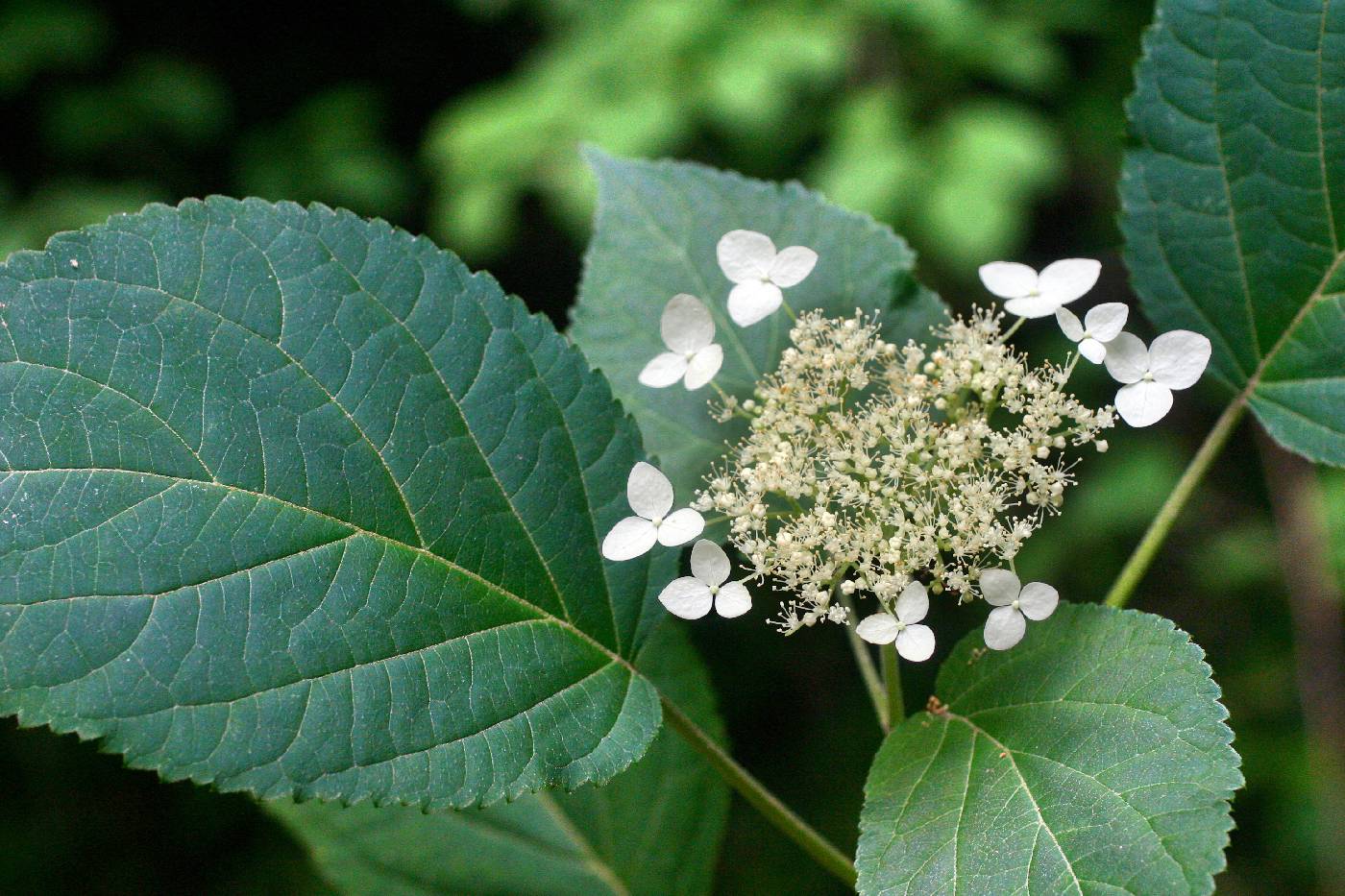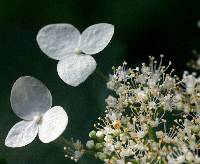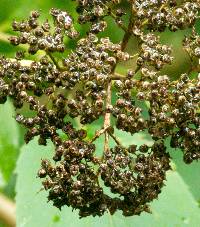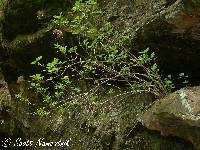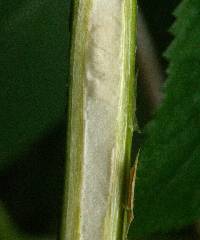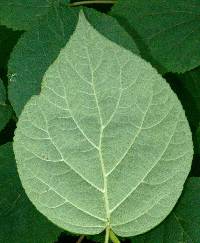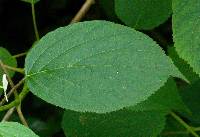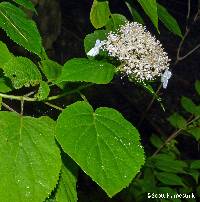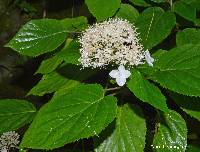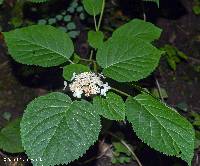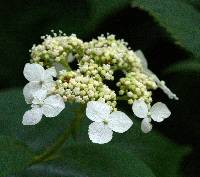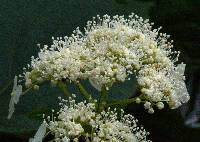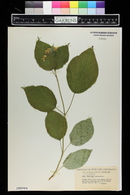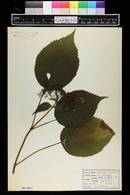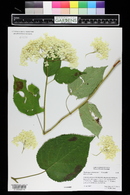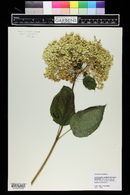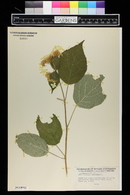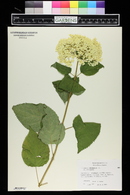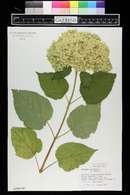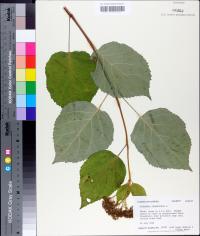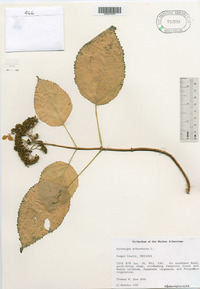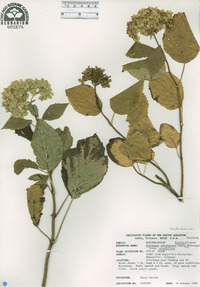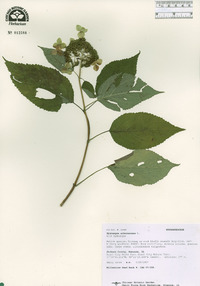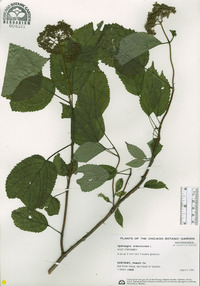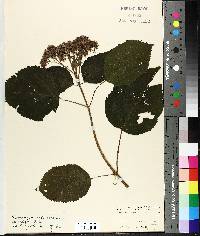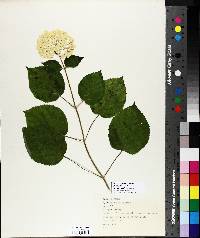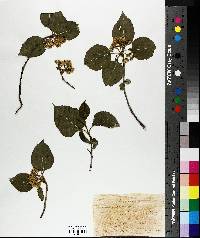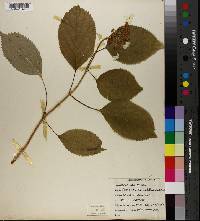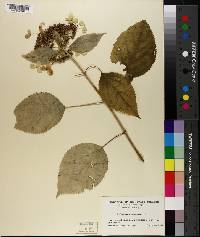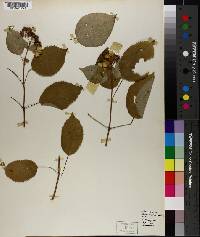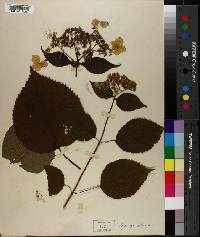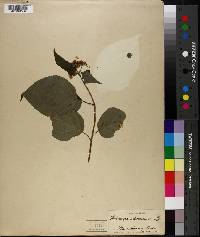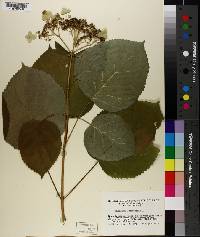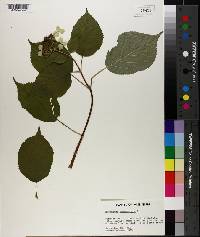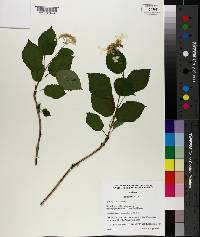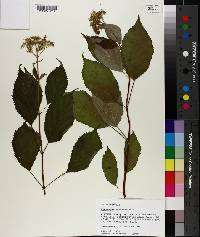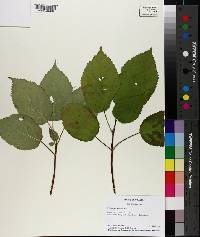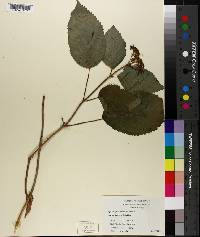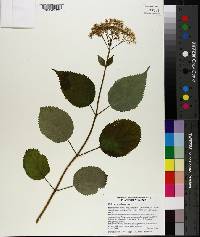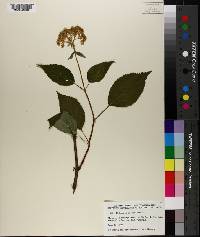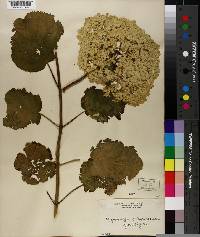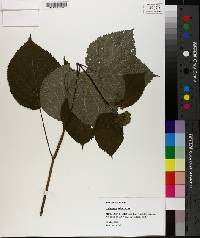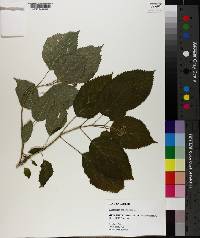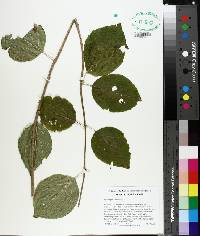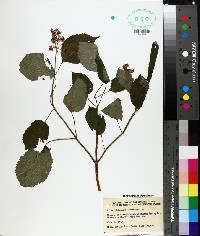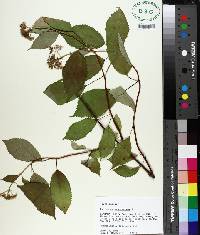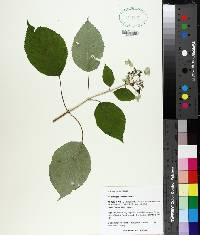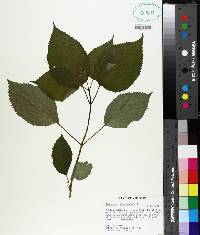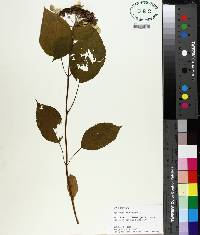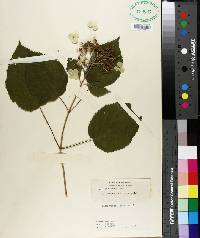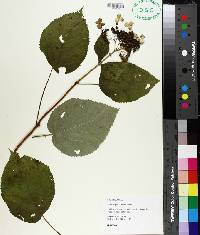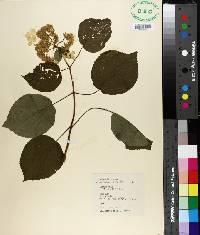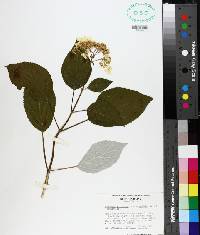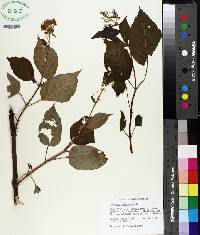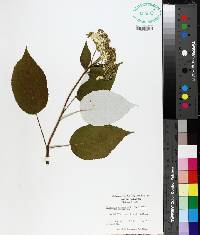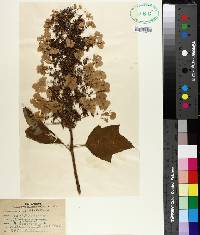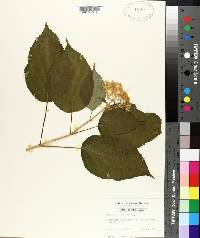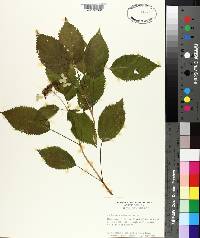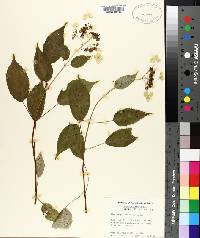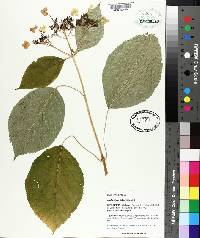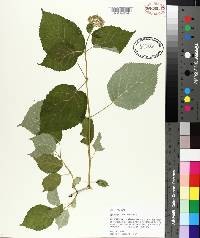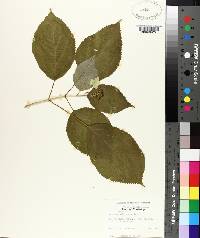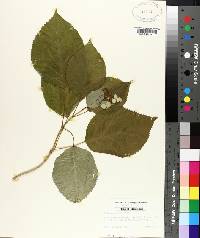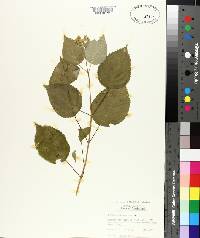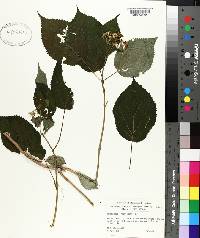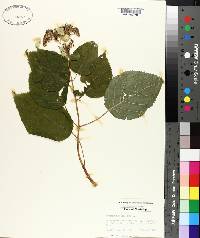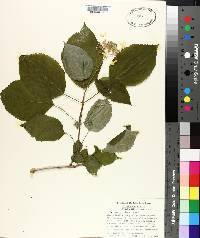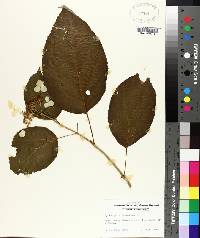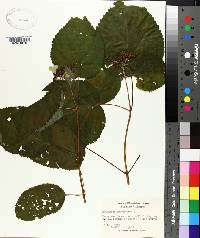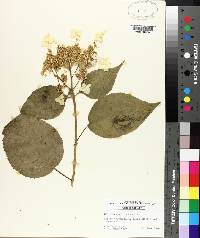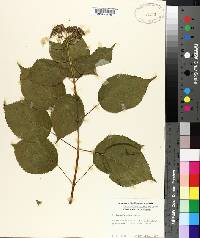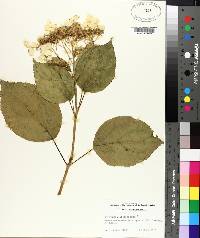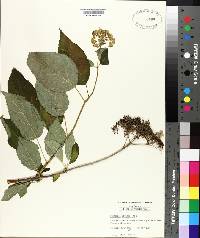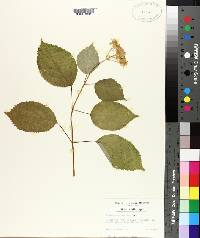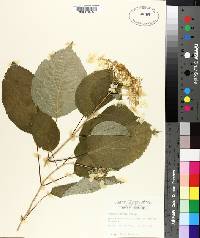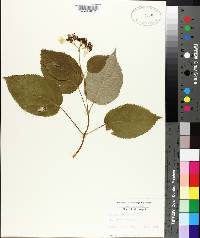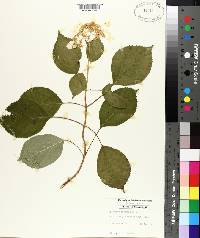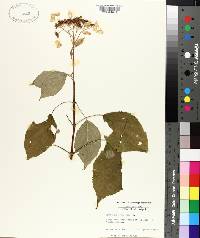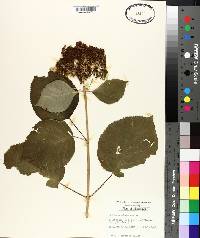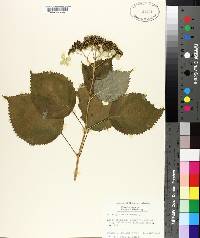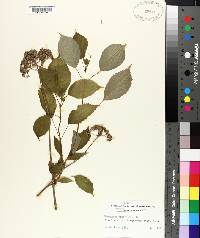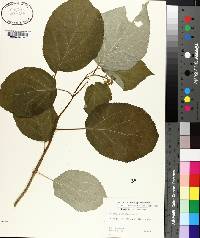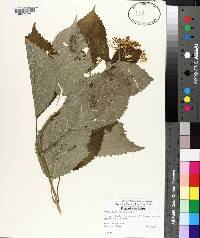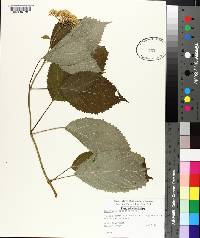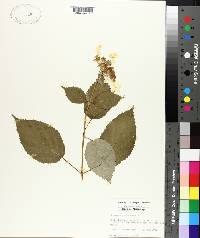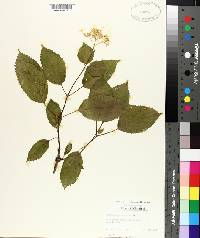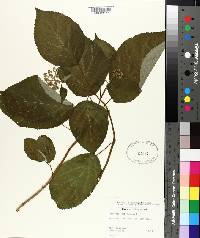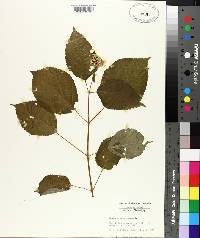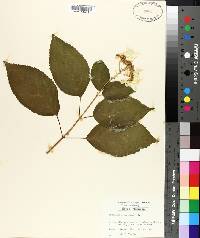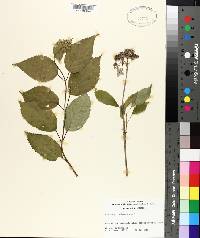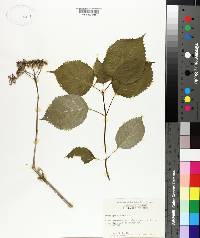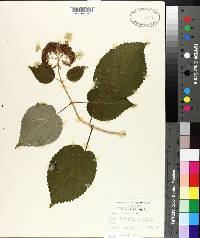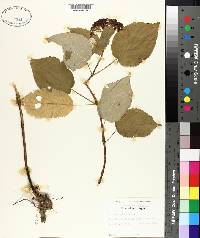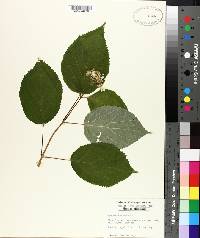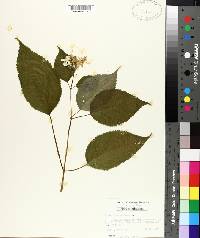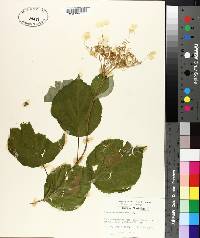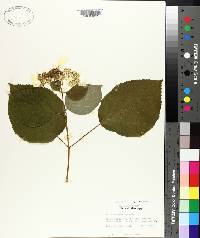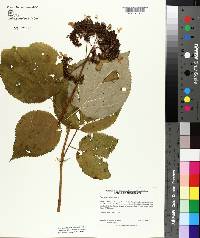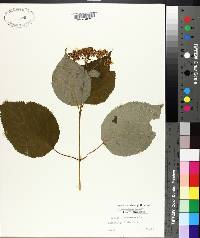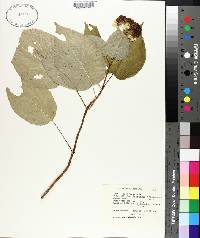Hydrangea arborescens
|
|
|
|
Family: Hydrangeaceae
Wild Hydrangea
[Hydrangea arborescens f. carnea (Raf.) Uttal, moreHydrangea arborescens var. grandiflora Rehder, Hydrangea vulgaris Michx.] |
Shrub 1 - 3 m tall Leaves: opposite, stalked, 5 - 20 cm long, 5 - 15 cm wide, egg-shaped to elliptic with a pointed tip and nearly heart-shaped to rounded base, toothed, hairless or slightly hairy beneath. Flowers: numerous, borne on a flat-topped to dome-shaped inflorescence 5 - 10 cm wide, changing from light green to white to brown, fertile throughout inflorescence or with some sterile flowers along margin, rarely completely sterile. The fertile flowers are small with tiny sepals and petals and ten stamens. Sterlie flowers with four white sepals about 1 cm across. Fruit: an elliptic capsule with blunt ends, eight- to ten-ribbed, opening to release very tiny seeds. Twigs: stout, grayish tan, shiny, usually unbranched, exfoliating with age. Buds: grenish brown, 0.3 - 1.9 cm long, with four to six scales. Similar species: Hydrangea arborescens is easy to identify in the Chicago region with its opposite leaves, distinctive inflorescences, and unbranched twigs that exfoliate in the second year. Flowering: June to August Habitat and ecology: In the Chicago Region, this species has only been found at the edge of a sandstone bluff in Jasper County. Elsewhere in its native range, it often grows in rocky woods and hillsides. Occurence in the Chicago region: native Notes: 'Annabelle' is a commonly planted cultivar with very large, sterile flowers. Etymology: Hydrangea comes fro the Greek words hydro, meaning water, and aggos, meaning jar, referring to the cup-shaped fruit. Arborescens means woody or tree-like growth. Author: The Morton Arboretum Straggling shrub 1-3 m; lvs ovate-oblong to broadly round-ovate, acuminate, serrate, subcordate to acute at base, glabrous above; infl flat-topped or broadly convex, 5-10 cm wide, fertile throughout or with some marginal fls sterile or rarely wholly sterile (the wholly sterile form often cult.); pet 5, white, 3 mm; stamens 10; ovary inferior, with 2(3) carpels; sep of the sterile fls (3)4, subrotund, nearly 1 cm, white, reticulate-veined; seeds elliptic, with blunt ends; 2n=36. Dry or moist, often rocky woods and hillsides; s. N.Y. to O., Mo., and Okla., s. to Ga., La., and Ark. June, July. The widespread var. arborescens has the lvs glabrous or with only a few scattered hairs along the midrib beneath. The well marked var. discolor Ser. (var. deamii) occurring from c. Ind. and Ill. to N.C., Ga., and Okla., has the lvs ±densely pubescent beneath with minutely tuberculate hairs. The var. discolor might perhaps equally well be treated as a distinct, closely allied species, H. cinerea Small. Gleason, Henry A. & Cronquist, Arthur J. 1991. Manual of vascular plants of northeastern United States and adjacent Canada. lxxv + 910 pp. ©The New York Botanical Garden. All rights reserved. Used by permission. From Flora of Indiana (1940) by Charles C. Deam [Deam recognizes four varieties. The typical variety, which has few sterile flowers and has lower leaf surfaces with pubescence limited to the veins is] rather frequent in the southern half of the state, becoming infrequent to very rare northward and possibly entirely absent from the region north of the distribution area shown on the map. This is a woodland species and is usually found in small colonies on the slopes and banks of deep ravines, cliffs, and streams. [Variety deamii] is distinguished from the type only by the dense pubescence of the lower surface of the leaves. The leaves are of all shapes. Since there is no character other than pubescence to distinguish this variety, it might be better to distinguish it as a mere form of the species. At first I thought [var. oblonga] was a mere environmental form. About 8 years ago I transplanted some plants into a bed in rich soil with the typical form [var. arborescens] and the plants have each year had rather small leaves with the blades tapering at the base. In this bed I have transplanted several forms and each year the plants maintain their peculiar forms. The distribution is probably the same as that of the [full] species [Hydrangea arborescens], and they are included on the same map. Mottier found a rare form [that bears sterile flowers only (var. sterilis)] in Monroe County and his report (Proc. Indiana Acad. Sci. 1919: 59-62. 1921) is the only one of this variety. ...... Indiana Coefficient of Conservatism: C = 7 Wetland Indicator Status: FACU |
|
|
|

